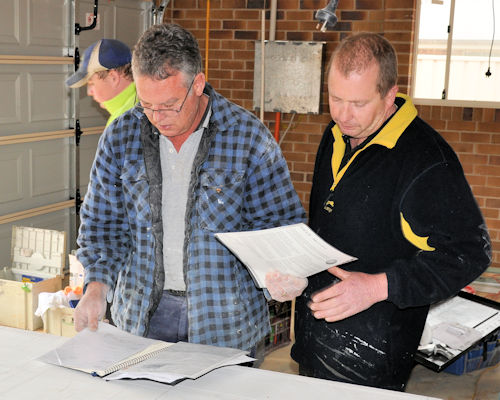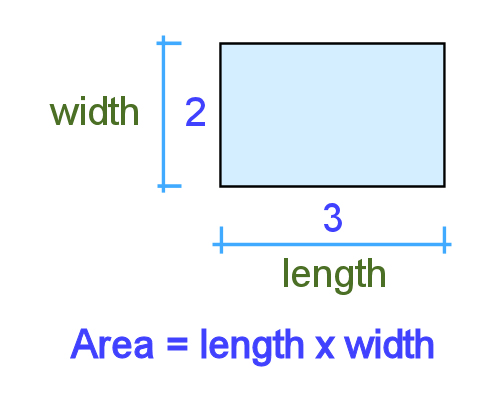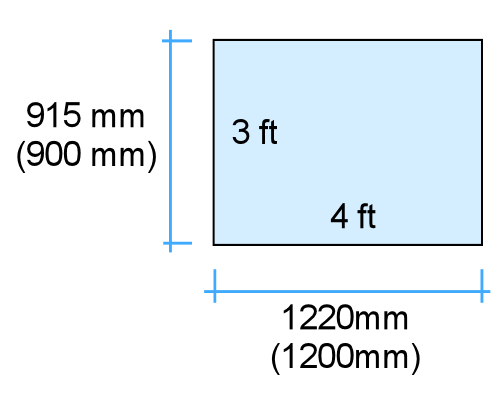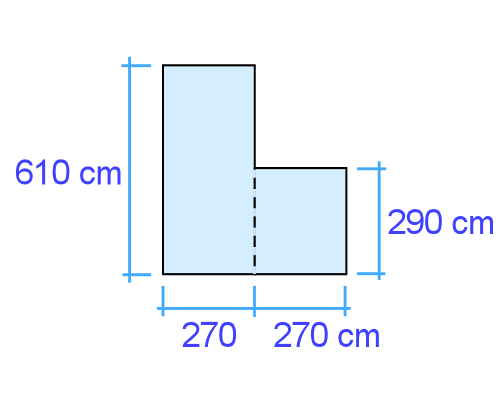Plans and specifications
 Audio for slide 1 (mp3 |6|KB)
Audio for slide 1 (mp3 |6|KB)
Before you commence any new installation, you should carefully check the work documentation to make sure you fully understand the specifications for the job.
The job sheet and plan should give you details on the subfloor structure, dimensions of the rooms, type of hard underlay required and installation method to be used.
If anything doesn't look right, or there are details that you don't understand, always check with someone who is authorised to give you the right information.

 Audio for slide 2 (mp3 |6|KB)
Audio for slide 2 (mp3 |6|KB)
We've discussed the following topics in various other units from the Flooring Technology resource.
You should go back to these units if you need to refresh your memory on any of the details:
- Floor covering plans - see Planning and costing
- Measure-ups and calculations - see Making measurements
- Work documents in general (including building plans, SWMSs, SDSs and Australian Standards) - see Work documents.

 Audio for slide 3 (mp3 |6|KB)
Audio for slide 3 (mp3 |6|KB)
Review of quantity calculations
You'll recall that the formula for finding the area of a square or rectangle is simply: length x width.
For example, if a room is 3 metres long and 2 metres wide, its area is:
Length x width = 3 m x 2 m = 6 square metres (m2)
By the same token, if the dimensions of a sheet of underlay are 1.2 m x 0.9 m, its area will be 1.08 m2.
To find out how many sheets of 1.2 x 0.9 underlay are required for the room above, you would simply divide the room area by the single sheet area.
That is: 6 m2 ÷ 1.08 m2 = 6 sheets (rounded up to the nearest full sheet).

 Audio for slide 4 (mp3 |6|KB)
Audio for slide 4 (mp3 |6|KB)
Note that some manufacturers produce their underlay sheets in imperial sizes, which means that the hard metric equivalent is a very precise measurement, generally expressed in millimetres.
For example, hardboard is made in 4 ft x 3 ft sheets, which means its metric size is 1220 x 915 mm - which is slightly bigger than the 'soft' conversion of 1200 x 900 (or 1.2 x 0.9).

 Audio for slide 5 (mp3 |6|KB)
Audio for slide 5 (mp3 |6|KB)
In these cases, if you want to find the square meterage area of one sheet, it's easiest to insert the decimal point to convert millimetres to metres as you commence your calculations - otherwise, you'll have lots of zeros to deal with by the time you get to the end of the process.
So the calculation for the above sheet would be:
1.22 x .915 = 1.116 m2
By inserting decimal points as you go, it also helps you to avoid the problem of mixing up different units of measure, especially if you're working with sheet sizes in millimetres and room sizes in centimetres or metres.

 Audio for slide 6 (mp3 |6|KB)
Audio for slide 6 (mp3 |6|KB)
Here is another example of a calculation where the different elements are in different units of measure.
In this scenario, the floor has been measured up in centimetres and the underlay sheet size is specified in millimetres.
Floor area:
Area 1: 6.1 x 2.7 = 16.47
Area 2: 2.9 x 2.7 = 7.83
Total area: 24.30 m2
Underlay product: 1800 x 1200 plywood
Sheet size = 1.8 x 1.2 = 2.16 m2
Number of sheets required:
24.3 (floor m2) ÷ 2.16 (sheet m2) = 12 sheets







